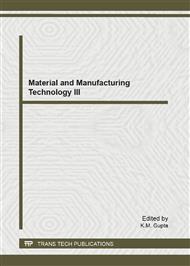p.293
p.298
p.301
p.305
p.309
p.315
p.321
p.328
p.333
Thiosulfate Leaching of Middle-Refractory Gold Ore with Ferricyanide as Oxidant
Abstract:
In order to decrease the consumption of lixiviant, study on dissolution of pure gold and middle-refractory gold ore using a novel thiosulfate leaching system with ferricyanide as oxidant was carried out. The results showed that the advantage of the novel system is that the thiosulfate consumption is negligible though the potential of ferricyanide is much higher than that of traditional cupric ammine complex. And compared to the ferric oxalate system, novel system could be used at relatively high pH condition which benefit to the stability of thiosulfate because ferricyanide can’t transfer to iron hydroxide in base solution. It is unlikely that very high dissolution rate of gold can be obtained using an air saturated thiosulfate- ferricyanide system without thiourea catalyst. However gold dissolution rate was increased with the increasing of concentration of ferricyanid in 5 mmol/L to 30mmol/L. When 0.1mmol/L thiourea was presented, the dissolution of gold approximately 1.5 times faster than that of in the absence of thiourea. Leaching of middle-refractory gold ore show that both of the consumption of thiosulfate and leaching rate was decreased compare to the traditional copper–ammonia thiosulfate system. Thiourea is not stable in base solution, but it was found that gold dissolution rates can be increased with a little thiourea ,the mechanism is still unclear.
Info:
Periodical:
Pages:
309-314
Citation:
Online since:
July 2012
Authors:
Keywords:
Price:
Сopyright:
© 2012 Trans Tech Publications Ltd. All Rights Reserved
Share:
Citation:


